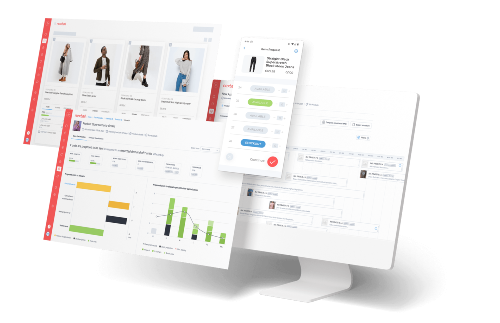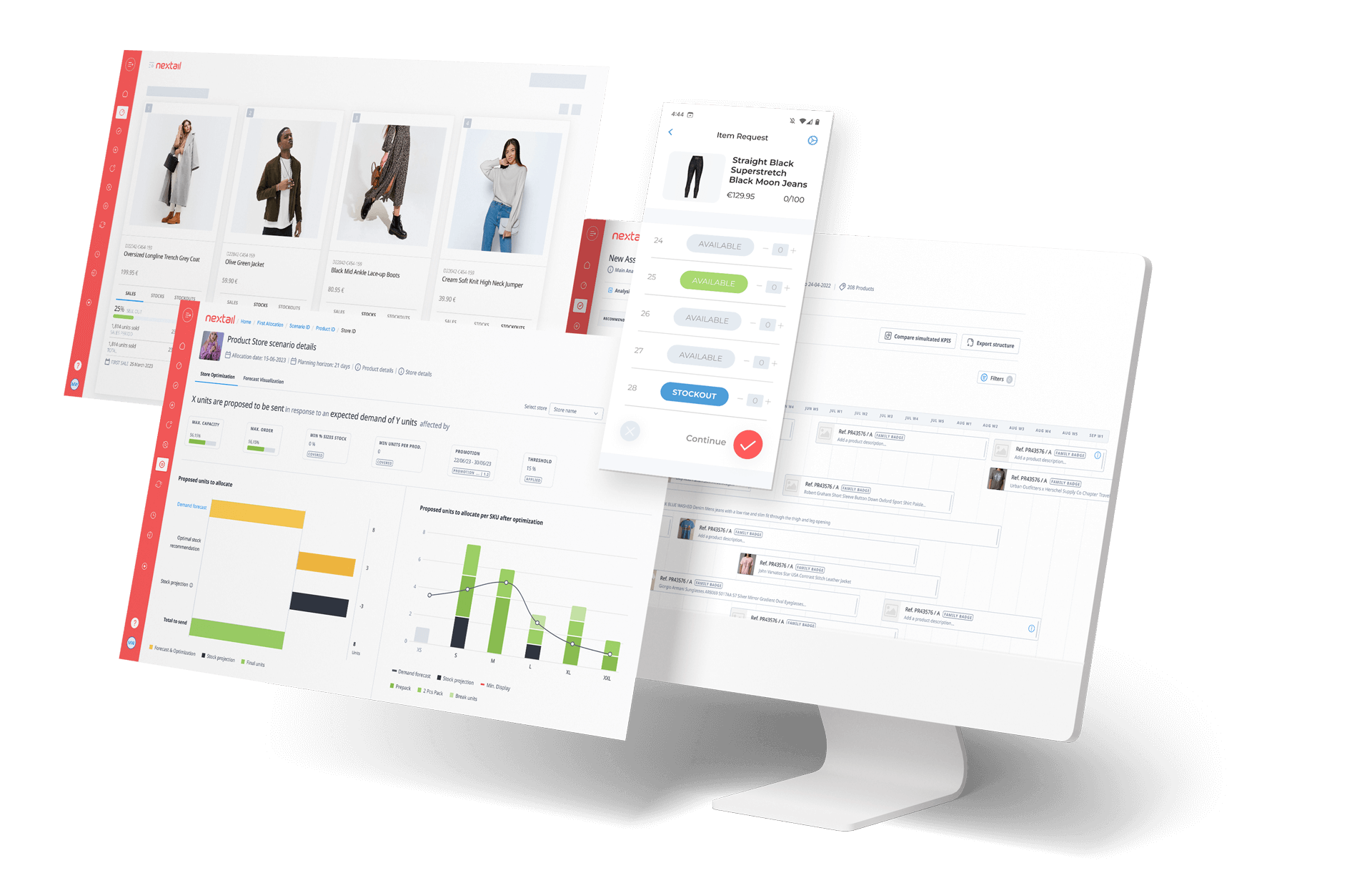Panel takeaways: Should fashion retailers rely on in-house tech or external solutions?
We explain why you might not want to go it alone.
Digital transformation is taking place across the breadth of retail, and innovation teams are unlocking solutions to some of the sector’s biggest challenges.
A key part of innovation is developing tech solutions and software. But how should retailers do it? Does the best innovation come from within — from its people who know the current business culture and its historic successes and failures — or from outsiders and external. solutions with a fresh perspective?
We connected retail brains Cristina López Pancorbo (El Corte Inglés), Eva Baquedano (Loewe), and Borja Zamácola (Aristocrazy), with David Luquin formerly of ISEM Fashion Business School to get the answers.
Tech isn’t the focus of your business
Building tech requires niche expertise which you can hire to fulfil internally, but it’s expensive and hard to lure top talent. And still, your business’s focus will never be on being a tech company.
There are companies whose entire focus, and expertise, is tech. What keeps tech teams employed is their software working. What keeps retailers employed is their products selling. So why not leave each role to their respective experts?
During the Nextail Live event, Cristina López Pancorbo echoed this sentiment, “The current role of a retailer is on selling. This is where we put all of our effort and focus. But our role should also be one that fosters and facilitates innovation. Retail by nature is a conservative sector, and it’s part of the heritage and branding of some brands. But we need to open our minds to those who can help us go even further.”
External solutions have developers with every level of ability and interest, working on new projects continually. The scope of work and the developer culture retains talent.
It’s hard to attract the right talent
Unlike other industries like finance and media, fashion retail hasn’t had to adopt ground-breaking technologies as quickly. Thus, it hasn’t been the biggest draw card for leading tech minds. While that’s starting to change thanks to tech companies that specialize in retail, there still isn’t yet a mature developer culture in retail itself.
Attracting tech talent is hard — the latest developments in AI and machine learning, and the hunger for these roles, means leading talent is in high demand. Typically, retailers don’t have the right networks, or budgets, to recruit in these fields.
As Borja Zamácola noted, “To look for talent first you need to check in internally. There’s certainly a lot of hidden internal talent, but a company needs to have the culture and atmosphere to create internal innovation. For some very specific skills -the most technical ones- sometimes you have to check the market, although it’s hard and expensive to get the right talent and that fits well within the culture of the company. These individuals are in high demand, and there aren’t many of them, so it’s not easy nor is it cheap to bring them onboard.”
Take the hiring of a data scientist, for example. This expert would normally join a tech company in a team that is used to thinking about data and technology. When joining a retail company, however, there’s often a need to develop a human interface with people who think about sales and trends.
Because of the limited scope with in-house solutions, retail teams require generalists who might lack depth of niche knowledge. External solutions, on the other hand, will have teams with broad and very specialist knowledge that can be brought into projects at the right time.
Technology is slow to build & time-consuming to care for
For data to be insightful, it must be thorough and precise. For AI to be smart, machine learning has to have had many thousands of scenarios passed through it. Gathering this much information, and training machines to process it, takes time. Brands and retailers, as seasonal businesses, often need to see their results faster.
No software, once up and running, is able to care for itself. Things can break, and teams may have ad hoc requests. The upkeep of software can be just as challenging as the implementation of it.
Scott Emmons, Innovation Lab founder at Neiman Marcus, spoke about the added strain of in-house solutions on the Future Commerce podcast. “I was very fortunate at Neiman Marcus to work within a very capable technical team”, Emmons shared, “they certainly had the ability to build it themselves, but where the problem lies is the supporting of it. It becomes an ongoing thing — keeping it up to date, keeping pace with ideas outside the world”.
Many retailers don’t have a culture of continually re-examining processes and systems, and there aren’t budgets year after year dedicated to their improvement, nor experts on hand to employ the latest thinking. It’s this commitment to eternal innovation that is taxing for a non-technology company with other priorities and challenges. As Emmons says, “technology progressed at a faster rate than what was going on internally.”
On the other hand, software companies are continually prioritizing development and updates, not just when there’s budget left over or something breaks.
It can be hard to think outside of the box
Equipping your business for its future from within, depends on the ideas of people who are already on the front lines. Gear-switching from carrying out existing work, or meeting current deadlines, to innovating and strategizing for the future is exceptionally taxing. Ideas can stagnate and teams can be held back by an institutionalized mentality of ‘the way things have always been done’.
As Emmons puts it, “You tend to recycle the same ideas, similar ideas, ideas that are a good idea for the company, but maybe not a good idea for the customer”.
Borja Zamácola agreed. “We need to depend on those who are more agile than we are or we’re going to tire ourselves out just like all of the many well-known brands that have fallen by the wayside or have closed. The key is to have a combination of a well-known brand and network but being able to depend on the whole retail ecosystem.”
Bringing in external partners helps create space for creative ideas, together. Pair your knowledge of the day-to-day and the customer, with fresh viewpoints on emerging technology, demographics or retail staging.
Your business will change
Naturally, things are going to change in your business — you’ll likely be adding categories, departments, entering new markets, channels, attracting new demographics or taking on new brands. If you’ve built tech in-house, can your tech handle the changes? In-house systems tend to be built for narrow, specific processes — this may be their beauty or their downfall.
On the flip side, external solutions are more robust and malleable — they’re used to tackling the many varied problems of multiple clients. Therefore, when things shift internally for you, the solution has flexibility to accommodate the changes.
In summary, the pros and cons of in-house solutions.
In-house pros:
- The purpose/mission of the tech can be more effectively communicated across the business to earn greater buy-in
- Competitive advantage
- Your own customer is always at the front of mind during development
- In case of emergency, support is focused on your business
- Occasionally, the tech doesn’t yet exist!
In-house cons:
- Incredibly time consuming (and distracting)
- Lacks fresh perspective on existing problems
- Hiring technical experts is challenging
- Project costings are often too conservative
- Systems developed as isolated from ideas and developments in broader retail tech landscape, and therefore not future-proof
- Upkeep of solutions isn’t anticipated
- Ensuring security is an ongoing commitment
Considerations when selecting external partners:
When choosing external partners, retailers must be both rigorous and seek out investments that prove their ROI. There are four golden rules in selecting the right fit:
Make sure the partner or provider understands your needs and business model.
“The startup or provider should have to do a bit of background work. Many people want to meet with you and sell you their services or product, but some don’t even realize that it doesn’t have anything to do with my business model, we don’t have a need for it, or it’s something we already have covered.” — Borja Zamácola
“The partner has to understand the magnitude of the project they are attempting to undertake. They need to really understand the needs of your business model and not just their need to sell.” — Cristina López Pancorbo
Select partners who have both technological and retail expertise.
“It’s not only the partner that has to do background work on you, you should also dive in and learn about them, even if it means visiting tech forums and geeking out a bit to understand who they really are.” — Borja Zamácola
Look for innovation — make sure the technology is at the forefront, as these companies will be better able to stay ahead long term.
“What retailers need are not solutions that do what they are already doing or what they think will be important in the future. What they need are solutions that are flexible enough to absorb whatever needs actually appear in the future.” — Joaquín Villalba, Nextail CEO & Co-Founder
Select partners who have highly able teams, dedicated to supporting you.
“One important thing to consider is the team itself. They probably have people with profiles that you don’t have internally, with tech that you just can’t develop internally. The cultural fit of the partner with the team that will work with them is also essential to a feeling of commitment from both sides, risk sharing, and common objectives.” — Eva Baquedano
In conclusion
At Nextail, we’re not going to launch a t-shirt line, or collaborate with a designer to reinvent footwear. That’s better done by brands. Instead, we’re going to focus on what we do best: innovating in the tech space to develop AI that automates complex industry processes.
Take a look at some of the retailers like Flying Tiger Copenhagen, River Island, and Style Union that are already using AI and machine learning to improve and automate their core merchandising decisions.



